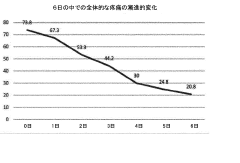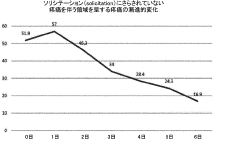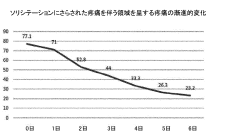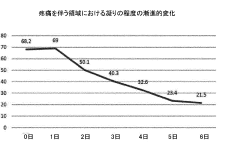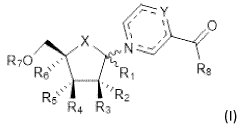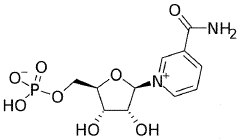Nicotinamide Mononucleotide: Enhancing Muscle Recovery
NMN Background and Objectives
Nicotinamide Mononucleotide (NMN) has emerged as a promising compound in the field of anti-aging and cellular health research. As a precursor to Nicotinamide Adenine Dinucleotide (NAD+), NMN plays a crucial role in various cellular processes. The primary objective of researching NMN in the context of muscle recovery is to explore its capacity to enhance the body's natural regenerative processes.
As individuals age, their ability to recover from physical exertion and muscle damage diminishes, leading to decreased athletic performance and increased risk of injury. By investigating NMN's effects on muscle tissue, researchers aim to develop strategies that can accelerate recovery times, reduce inflammation, and potentially increase muscle strength and endurance.
The historical background of NMN research can be traced back to the early 2000s when scientists began to unravel the importance of NAD+ in cellular function. Subsequent studies revealed that NAD+ levels decline with age, correlating with various age-related health issues. This discovery led to the exploration of NAD+ precursors, including NMN, as potential interventions to boost NAD+ levels and mitigate age-related cellular dysfunction.
In recent years, the focus on NMN has intensified, with numerous studies demonstrating its beneficial effects on various aspects of health, including cardiovascular function, cognitive performance, and metabolic health. The compound's ability to cross cell membranes efficiently and its rapid conversion to NAD+ make it an attractive candidate for therapeutic applications.
The technological evolution in NMN research has been marked by advancements in analytical techniques, allowing for more precise measurements of NAD+ levels and related metabolites. Additionally, improvements in NMN synthesis and formulation have made it possible to conduct larger-scale studies and explore different delivery methods for optimal absorption and efficacy.
As research progresses, the objectives for NMN studies in muscle recovery are multifaceted. Scientists aim to elucidate the molecular mechanisms by which NMN influences muscle tissue repair and regeneration. This includes investigating its effects on mitochondrial function, protein synthesis, and the activation of muscle stem cells. Furthermore, researchers seek to determine optimal dosing strategies and potential synergistic effects with other compounds or interventions to maximize NMN's benefits for muscle recovery.
The ultimate goal of this research is to develop evidence-based interventions that can be translated into practical applications for athletes, fitness enthusiasts, and aging individuals seeking to maintain muscle health and function. By understanding the full potential of NMN in enhancing muscle recovery, researchers hope to contribute to the development of novel therapies and nutritional strategies that can improve quality of life and extend the period of healthy, active living.
Market Analysis for NMN Supplements
The global market for Nicotinamide Mononucleotide (NMN) supplements has experienced significant growth in recent years, driven by increasing consumer awareness of its potential health benefits, particularly in muscle recovery and anti-aging applications. This market expansion is closely tied to the growing interest in longevity and wellness among aging populations in developed countries.
The NMN supplement market is primarily segmented into capsules, tablets, and powder forms, with capsules currently dominating the market share due to their convenience and precise dosage. However, powder forms are gaining popularity, especially among athletes and fitness enthusiasts, due to their versatility in mixing with beverages or food.
Geographically, North America and Asia-Pacific regions lead the NMN supplement market. The United States, in particular, has shown robust demand, fueled by a health-conscious consumer base and a strong presence of key market players. In Asia, Japan stands out as a significant market, given its aging population and cultural emphasis on longevity.
The target demographic for NMN supplements is primarily middle-aged and older adults, typically aged 40 and above, who are seeking ways to maintain their health and vitality. However, there is a growing interest among younger consumers, particularly athletes and fitness enthusiasts, who are exploring NMN's potential in enhancing muscle recovery and overall performance.
Market growth is further propelled by ongoing research into NMN's efficacy in various health applications. Studies focusing on its role in muscle recovery, metabolic health, and cellular energy production are particularly influential in shaping consumer perceptions and driving market demand.
Despite the positive growth trajectory, the NMN supplement market faces challenges. These include regulatory uncertainties in different countries, varying quality standards among manufacturers, and the need for more comprehensive long-term studies on NMN's effects. Additionally, the market is becoming increasingly competitive, with new entrants and established nutritional supplement companies vying for market share.
Looking ahead, the NMN supplement market is expected to continue its growth trend. Factors such as increasing health awareness, rising disposable incomes in emerging markets, and ongoing scientific research are likely to sustain this growth. The market is also seeing trends towards product diversification, with companies exploring novel delivery methods and combinations with other supplements to enhance efficacy and appeal to a broader consumer base.
NMN Research Status and Challenges
Nicotinamide Mononucleotide (NMN) research has made significant strides in recent years, particularly in the context of muscle recovery enhancement. The current status of NMN research is characterized by a growing body of evidence supporting its potential benefits for cellular health and longevity. However, several challenges remain in fully understanding and harnessing its effects on muscle recovery.
One of the primary areas of focus in NMN research is its role in NAD+ biosynthesis. Studies have shown that NMN supplementation can effectively increase NAD+ levels in various tissues, including skeletal muscle. This has important implications for muscle recovery, as NAD+ is crucial for energy metabolism and cellular repair processes. Recent research has demonstrated that NMN administration can improve mitochondrial function and enhance muscle regeneration in animal models.
Despite these promising findings, translating these results to human applications presents significant challenges. Human clinical trials investigating NMN's effects on muscle recovery are still limited in number and scope. The optimal dosage, timing, and duration of NMN supplementation for muscle recovery remain unclear, necessitating further research to establish standardized protocols.
Another challenge in NMN research is the need for more comprehensive understanding of its long-term effects and potential side effects. While short-term studies have shown promising results, the impact of prolonged NMN supplementation on muscle health and overall physiology requires further investigation. Additionally, potential interactions between NMN and other supplements or medications used in muscle recovery regimens need to be thoroughly examined.
The bioavailability and stability of NMN pose additional challenges in research and potential therapeutic applications. Current formulations may have limited absorption rates or degradation issues, which could affect the efficacy of NMN supplementation. Developing more stable and bioavailable forms of NMN is an ongoing area of research that could significantly impact its potential for enhancing muscle recovery.
Regulatory considerations also present challenges in NMN research and its application in muscle recovery. The classification of NMN as a dietary supplement or pharmaceutical agent varies across different countries, affecting research protocols and potential commercialization. Standardization of NMN production and quality control measures are crucial challenges that need to be addressed to ensure consistent and reliable research outcomes.
Lastly, the mechanisms by which NMN enhances muscle recovery are not fully elucidated. While its role in NAD+ biosynthesis is well-established, the downstream effects on specific muscle recovery pathways, including protein synthesis, inflammation reduction, and satellite cell activation, require further investigation. Unraveling these mechanisms is essential for optimizing NMN-based strategies for muscle recovery enhancement.
Current NMN Delivery Methods
01 NMN supplementation for muscle recovery
Nicotinamide Mononucleotide (NMN) supplementation has shown potential in enhancing muscle recovery after exercise or injury. It may help reduce inflammation, improve energy metabolism, and promote muscle repair processes, leading to faster recovery times and improved muscle function.- NMN supplementation for muscle recovery: Nicotinamide Mononucleotide (NMN) supplementation has shown potential in enhancing muscle recovery after exercise or injury. It may help reduce inflammation, improve mitochondrial function, and promote cellular energy production, leading to faster recovery times and improved muscle performance.
- NMN-based compositions for athletic performance: Formulations containing NMN have been developed specifically for athletes to improve their performance and recovery. These compositions may include additional ingredients such as amino acids, vitamins, and minerals to synergistically enhance the effects of NMN on muscle recovery and overall athletic performance.
- NMN delivery methods for muscle recovery: Various delivery methods have been explored to optimize the absorption and efficacy of NMN for muscle recovery. These may include oral supplements, transdermal patches, intravenous administration, or novel formulations designed to enhance bioavailability and target muscle tissue specifically.
- Combination of NMN with other compounds for enhanced recovery: Research has focused on combining NMN with other compounds to create synergistic effects for muscle recovery. These combinations may include antioxidants, anti-inflammatory agents, or other NAD+ precursors to maximize the benefits of NMN supplementation on muscle repair and regeneration.
- NMN's role in age-related muscle recovery: Studies have investigated the potential of NMN in addressing age-related decline in muscle recovery and function. NMN supplementation may help counteract the reduced NAD+ levels associated with aging, potentially improving muscle recovery and maintenance in older individuals.
02 NMN's role in mitochondrial function and energy production
NMN plays a crucial role in boosting NAD+ levels, which is essential for mitochondrial function and energy production in muscle cells. This increased energy availability may contribute to improved muscle performance and faster recovery from exercise-induced fatigue.Expand Specific Solutions03 Combination of NMN with other compounds for enhanced muscle recovery
Research suggests that combining NMN with other compounds such as amino acids, antioxidants, or other NAD+ precursors may have synergistic effects on muscle recovery. These combinations could potentially enhance the overall effectiveness of NMN in promoting muscle repair and regeneration.Expand Specific Solutions04 NMN's impact on age-related muscle decline
NMN supplementation may help combat age-related muscle decline by improving muscle stem cell function, enhancing protein synthesis, and reducing oxidative stress. This could lead to better muscle maintenance and recovery in older individuals.Expand Specific Solutions05 Delivery methods for NMN in muscle recovery applications
Various delivery methods for NMN are being explored to optimize its effectiveness in muscle recovery. These may include oral supplements, topical applications, or novel formulations designed to enhance NMN absorption and utilization by muscle tissues.Expand Specific Solutions
Key Players in NMN Industry
The research on Nicotinamide Mononucleotide (NMN) for enhancing muscle recovery is in a growth phase, with increasing market size and technological advancements. The global NMN market is expanding rapidly, driven by growing interest in anti-aging and health optimization. Companies like Elysium Health, Metro International Biotech, and Nuvamid SA are at the forefront, developing innovative NMN-based products. Academic institutions such as Cornell University and Sichuan University are contributing to the scientific understanding of NMN's effects on muscle recovery. The technology is maturing, with companies like Meiji Holdings and Société des Produits Nestlé exploring commercial applications, indicating a competitive landscape that spans both research-focused entities and consumer product companies.
Metro International Biotech LLC
Elysium Health, Inc.
Breakthrough Studies on NMN and Muscle Recovery
- The use of nicotinamide mononucleotide (NMN) and its pharmaceutically acceptable derivatives or salts for topical administration to prevent or treat muscle, ligament, or tendon pain, offering a safer alternative with reduced side effects.
- The use of nicotinamide mononucleotide (NMN) or its pharmaceutically acceptable derivatives and salts, which can be administered topically in forms like gels or emulsions, to reduce muscle, ligament, and tendon pain without the adverse effects of conventional therapies.
Safety and Regulatory Considerations for NMN
The safety and regulatory considerations for Nicotinamide Mononucleotide (NMN) are crucial aspects that require thorough examination as research on its potential for enhancing muscle recovery progresses. While NMN has shown promise in preclinical studies, its safety profile in humans, particularly for long-term use, is still being evaluated.
Current regulatory status of NMN varies across different regions. In the United States, the Food and Drug Administration (FDA) has not yet approved NMN as a drug or dietary supplement. However, it is available as a research chemical and is sold as a dietary supplement, though its legal status remains somewhat ambiguous. In Japan, NMN has been approved as a food ingredient, reflecting a more permissive regulatory approach.
Safety studies on NMN have primarily been conducted in animal models, with limited human trials. These studies have generally shown a favorable safety profile at the doses tested. However, more extensive human clinical trials are needed to establish long-term safety and optimal dosing regimens. Potential side effects and interactions with other medications or supplements also require further investigation.
Regulatory bodies are closely monitoring the emerging research on NMN. As more data becomes available, it is likely that regulatory guidelines will evolve. This may include specific requirements for manufacturing standards, quality control, and labeling of NMN products. Companies involved in NMN research and production should stay informed about these developing regulations to ensure compliance.
One key regulatory consideration is the classification of NMN. Depending on its intended use and marketing claims, it could be regulated as a dietary supplement, a food ingredient, or potentially as a drug. Each classification carries different regulatory requirements and pathways for approval.
Ethical considerations in NMN research, particularly in human trials, are also important. This includes ensuring informed consent, monitoring for adverse effects, and maintaining transparency in reporting results. As NMN research expands, establishing clear ethical guidelines will be crucial.
The global nature of NMN research and potential commercialization adds another layer of complexity to regulatory considerations. Different countries may have varying standards and approval processes, necessitating a comprehensive understanding of international regulatory landscapes for companies looking to market NMN products globally.
In conclusion, as research on NMN for muscle recovery advances, addressing safety concerns and navigating the evolving regulatory landscape will be critical. Continued collaboration between researchers, regulatory bodies, and industry stakeholders will be essential in establishing a clear framework for the safe and effective use of NMN.
Potential Applications in Sports Medicine
Nicotinamide Mononucleotide (NMN) has emerged as a promising compound in the field of sports medicine, offering potential applications for enhancing muscle recovery and overall athletic performance. As athletes continually push their physical limits, the demand for effective recovery strategies has intensified, making NMN a subject of significant interest among researchers and sports professionals alike.
One of the primary applications of NMN in sports medicine is its potential to accelerate muscle recovery after intense exercise or injury. Studies have shown that NMN supplementation can increase levels of nicotinamide adenine dinucleotide (NAD+) in muscle tissues, which plays a crucial role in cellular energy production and repair processes. This enhanced NAD+ availability may lead to faster recovery times and reduced muscle soreness, allowing athletes to resume training more quickly and maintain peak performance levels.
Furthermore, NMN's ability to support mitochondrial function presents exciting possibilities for improving endurance and stamina in athletes. By optimizing cellular energy production, NMN supplementation could potentially enhance aerobic capacity and delay the onset of fatigue during prolonged physical exertion. This application could be particularly beneficial for endurance athletes such as long-distance runners, cyclists, and triathletes.
Another area of interest in sports medicine is NMN's potential to mitigate age-related decline in athletic performance. As athletes age, they often experience a decrease in muscle mass, strength, and recovery capacity. NMN's role in supporting cellular health and metabolism could help older athletes maintain their performance levels and extend their competitive careers. This application could revolutionize the approach to training and competition for masters athletes across various sports disciplines.
NMN's anti-inflammatory properties also present intriguing possibilities for sports medicine. Chronic inflammation is a common issue among athletes, often resulting from overtraining or repetitive stress injuries. By reducing inflammation, NMN supplementation could potentially alleviate pain, improve joint mobility, and enhance overall recovery, allowing athletes to train more consistently and effectively.
Additionally, the potential cognitive benefits of NMN supplementation could have significant implications for sports that require high levels of mental acuity and decision-making skills. Improved cognitive function could enhance an athlete's ability to process information quickly, make split-second decisions, and maintain focus during high-pressure situations, ultimately leading to improved performance in sports such as tennis, golf, and team sports.
As research in this field progresses, it is likely that sports medicine professionals will explore more targeted applications of NMN, such as personalized supplementation protocols based on an athlete's specific needs, genetic profile, and training regimen. The integration of NMN into comprehensive recovery and performance enhancement strategies could potentially redefine the boundaries of human athletic achievement and revolutionize sports medicine practices in the coming years.
